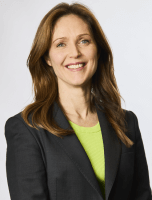In January 2015, IP Australia released their report Australian Medical Devices: A Patent Analytics Report. We have summarised the key findings of the report in this article.
The study identified 139,170 Patent Cooperation Treaty (PCT) applications filed globally in the medical devices area with a priority date between 2001 and 2012. Of these applications, 2,706 had an Australian inventor. The United States dominated medical device patenting with nearly half of the PCT applications analysed having an inventor from the USA.
The analysis revealed that over the period studied, Australia generated around 2% of the global medical device inventions based on inventor participation. This ranked Australia 13th worldwide.
Of the 48 countries analysed, 14 were considered to have a specialisation in medical devices. Of these countries, Australia ranked 8th.
The majority of Australian medical device inventions originated from New South Wales (50%), followed by Victoria (21%), Queensland (12%) and South Australia (6%). This correlates with the location of medical device companies across Australia with 55% located in NSW, 24% in VIC and 12% in QLD.
Geographical coverage
The 2,706 Australian-originating PCT applications analysed gave rise to 10,812 ‘national phase’ applications, of which 3,397 have led to granted patents. The most popular national phase filing countries were the USA, Australia, the European Union, Japan, China and Canada. These may be regarded as countries having favourable markets for medical device products as well as a favourable attitude to intellectual property rights.
Collaboration
Over the period studied, the number of Australian inventions involving a foreign inventor varied between 13% and 24%. USA, Germany and the United Kingdom supplied the largest number of collaborating inventors to Australian inventions. China ranked 8th for collaboration, with Australia ranking ahead of Sweden, Canada, France and Singapore. Research entities were the most collaborative of all the applicants considered in the study.
Key areas of innovation
As part of IP Australia’s analysis, keywords in the title and abstract were used to visually map hotspots of innovation. This revealed the areas of most prolific Australian medical device development to include:
- Syringe development
- Vision, eye and lens-related innovation
- Implants including implantable joints and prostheses
- Surgical and orthopaedic devices
- Catheters and cardiac inventions
- Dental devices
- Electromedical and diagnostics including magnetic and ultrasound imaging and implantable neurostimulation
- Computer-related medical inventions, and
- Tissue engineering and cardiac inventions
Diversity
The Commonwealth Scientific and Industrial Research Organisation (CSIRO) was the applicant demonstrating the greatest diversity of innovation, with applications filed in areas including:
- Telemedicine
- Polymeric coatings and tissue sealants
- Dry aerosol delivery
- Microwave-based and acoustic energy-based blood flow monitoring
- Image processing
- Motion and mobility monitoring, and
- Alzheimer’s assessment.
Publicly funded research and innovation
The top five medical device filing universities during the period studied were:
- University of Queensland
- University of Sydney
- Queensland University of Technology
- Monash University, and
- University of New South Wales.
The report also shows strong collaboration links between the universities and also with other research organisations, as well as private companies.
IP Australia’s report is comprehensive and informative and demonstrates that a lot of understanding about the networks and nature of an industry can be obtained by looking at patent data.
For more information on medical devices innovation, please contact Alyssa Grabb.

